 W
WArmy men, or plastic soldiers, are toy soldiers that are about 5 cm (2.0 in) tall and most commonly molded from olive green, relatively unbreakable plastic. Unlike the more expensive toy soldiers available in hobby shops, army men are sold at low prices in discount stores and supermarkets in bulk packaging. Army men are sold painted green and almost always dressed in modern military uniforms and armed with 20th-century weapons. 'Jumbo' army men are a less common secondary scale with 4.75-inch (12.1 cm) soldiers made with the same process.
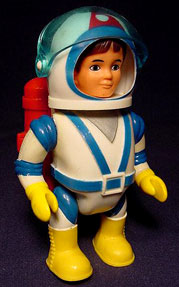 W
WThe toy line known as Billy Blastoff incorporated several versions of a four-inch-tall, plastic, child-faced adventurer produced by Eldon in the late 1960s and early 70s. The concept was licensed to Tomy by Eldon for distribution in Japan. Billy Blastoff was sometimes packaged as a deluxe Space Set with his friend Robbie Robot. Billy and Robbie could be purchased separately or packaged with equipment in different Action Sets. Vehicles made for the figures were powered by a gear beneath the figures' pack which also held "AA" batteries. The battery pack could also power several figure-held accessories such as a Radar Scope, Space Gun and underwater light via jack and corded plug.
 W
WCentury 21 Merchandising and Century 21 Toys were merchandising companies associated with Gerry Anderson's Century 21 Productions. There was also a publishing line, Century 21 Publications which created the comic book titles TV Century 21 and Lady Penelope ; and a music department, Century 21 Music which marketed audiobooks and soundtracks from the series.
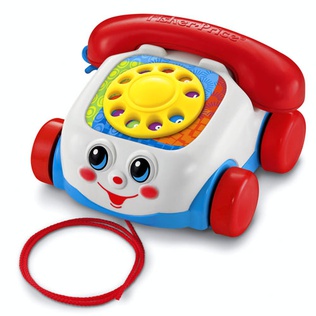 W
WThe Chatter Telephone is a pull toy for toddlers 12 to 36 months of age. Introduced in 1961 by the Fisher-Price company as the "Talk Back Phone" for infants and children, which was updated to the name Chatter Telephone in 1962, is a roll along pull toy. It has a smiling face, and when the toy is pulled, it makes a chattering sound and the eyes move up and down. The toy has a rotary dial that rings a bell, and was conceived as a way to teach children how to dial a phone.
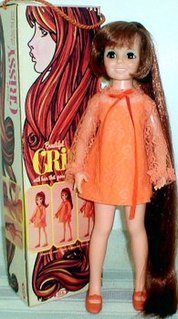 W
WCrissy is an American fashion doll with a feature to adjust the length of its hair. Crissy was created in the Ideal Toy Corporation's prototype department in 1968. She has auburn hair and is 18 inch (36 cm) tall. While having stationary foundation or base hair rooted to its head, the Crissy doll also had another thick strand or lock of hair that emerged from an opening in the top of the doll's head, which could be lengthened or shortened with a knob in the doll's back so a child could choose to make the hair short or long.
 W
WDon't Break the Ice is a children's tabletop game for two to four players ages 3 and up. Marketed by Schaper Toys in 1968, the game is now manufactured by Hasbro subsidiary Milton Bradley.
 W
WThe Easy-Bake Oven is a working toy oven that Kenner introduced in 1963, and which Hasbro still manufactured as of late May 2017. The original toy used a pair of ordinary incandescent light bulbs as a heat source; current versions use a true heating element. Kenner sold 500,000 Easy-Bake Ovens in the first year of production. By 1997, more than 16 million Easy-Bake Ovens had been sold.
 W
WEfsi was a Dutch company making diecast cars and trucks starting in 1959 under the Bestbox name. The company could be considered the Matchbox Toys of the Netherlands, but its origins and purpose as a government sponsored employer was far less commercial than other toy manufacturers. Efsi was based in Heerlen, the Netherlands, which is located in southern Limburg province.
 W
WEtch A Sketch is a mechanical drawing toy invented by André Cassagnes of France and subsequently manufactured by the Ohio Art Company and now owned by Spin Master of Toronto, Ontario, Canada.
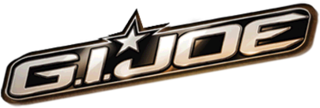 W
WG.I. Joe is an American media franchise and a line of action figures owned and produced by the toy company Hasbro. The initial product offering represented four of the branches of the U.S. armed forces with the Action Soldier, Action Sailor, Action Pilot, Action Marine and later on, the Action Nurse. The name is derived from the usage of "G.I. Joe" for the generic U.S. soldier, itself derived from the more general term "G.I.". The development of G.I. Joe led to the coining of the term "action figure". G.I. Joe's appeal to children has made it an American icon among toys.
 W
WG.I. Joe: America's Movable Fighting Man is a line of action figures produced by Hasbro. The initial product offering represented four of the branches of the U.S. armed forces. The term G.I. stands, in popular usage, for Government Issue and became a generic term for U.S. soldiers, especially ground forces. The term originated in WWI, when much of the government-issued equipment was stamped "G.I.", meaning that it was made from galvanized iron. The development of G.I. Joe led to the coining of the term "action figure".
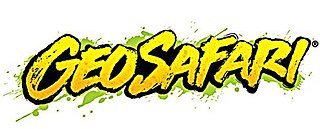 W
WGeoSafari is a product line of technological educational toys, including the GeoSafari electronic teaching aid, GeoSafari Globe, and the Phonics Lab, owned by Educational Insights, Inc.
 W
WGonks are a novelty toy and collectible originating from the United Kingdom in the 1960s.
 W
WThe Hamilton's Invaders was a 1964 series of plastic toys of giant insect type monsters, toy soldiers and vehicles. The toyline was conceived and marketed by Remco on television during the early 1960s, inspired by the giant insect genre that were popular from the 1950s, that were in reruns on TV.
 W
WJohnny Seven O.M.A. is a multi function toy weapon produced by Deluxe Reading under their Topper Toys toyline, and released in 1964. Johnny Seven O.M.A. was the best selling boys' toy of 1964, and was marketed heavily on children's television. It has a unique number of features, including seven different actions. The toy is no longer made, and has become a collector's item.
 W
WLego Trains is a product range and theme of the construction toy Lego, which incorporates buildable train sets. The Lego Trains theme became a sub-theme of Lego City in 2006. Products in the range have included locomotives, tracks, rolling stock, stations, signal boxes, and other track-side buildings and accessories. The theme is popular among adult fans, as well as children, and has spawned international associations and conventions. The train system is sometimes referred to as 'L-gauge' among Lego fans, in reference to traditional model railway scales. Lego trains use a nominal gauge of 37.5mm, 5.5mm wider than O gauge, derived from a centreline gauge of 40mm.
 W
WLittle People is a toy brand for children ages 6–36 months and to ages 3 and up, originally produced by Fisher-Price, Inc. in the 1960s as the Play Family People. The current product line consists of playsets, mini-sets and accessories, books, CDs, and DVDs focusing on various configurations of 5 characters named Eddie, Tessa, Mia, Koby, and Sofie. Mattel reports that since the brand's launch, over 2-billion Little People figures have been sold in over 60 countries. In 2016, Little People was inducted into the National Toy Hall of Fame.
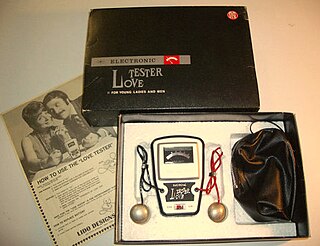 W
WThe Love Tester is a novelty toy made by Nintendo in 1969. Designed "for young ladies and men", the device tries to determine how much two people love each other. To operate the device, both users grab one of the connected spherical metal sensors with one hand and hold each other's hands with the other; then, the meter on the device displays, on a scale between 1 and 100, their "love score".
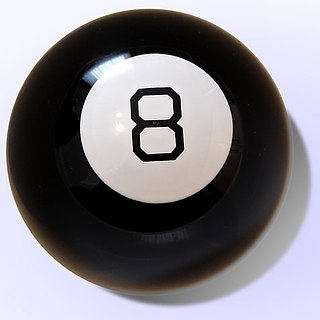 W
WThe Magic 8-Ball is a plastic sphere, made to look like an eight-ball, that is used for fortune-telling or seeking advice. It was invented in 1946 by Albert C. Carter and Abe Bookman and is currently manufactured by Mattel. The user asks a yes–no question to the ball, then turns it over to reveal an answer in a window on the ball.
 W
WMebetoys was an Italian toy manufacturer that produced die-cast model cars during the 1960s and 1970s. The company was purchased by Mattel in 1969. Mebetoy's main competition in Italy was the earlier trailblazer Mercury, Polistil and the rarer Ediltoys.
 W
WMetal House was founded as Marumiya in 1943; the company has produced some well-known tin toys. Especially familiar to collectors of battery-operated tin toy robots, the firm originally operated as a subcontractor producing toys for some of the most prolific Japanese toy companies such as Horikawa, Nomura, and Yonezawa during the post World War II heyday of tin toys.
 W
WNerf is a toy brand formed by Parker Brothers and currently owned by Hasbro. Most of the toys are a variety of foam-based weaponry, with other Nerf products including balls for sports such as American football, basketball, and baseball. Their best known toys are their dart guns that shoot ammunition made from "Nerf foam". Their primary slogan, first introduced in the 1990s, is "It's Nerf or Nothin'!". Annual revenues under the Nerf brand are approximately US$400 million.
 W
WOperation is a battery-operated game of physical skill that tests players' eye-hand coordination and fine motor skills. The game's prototype was invented in 1964 by John Spinello, a University of Illinois industrial design student at the time, who sold his rights to the game to renowned toy designer Marvin Glass for a sum of US$500 and the promise of a job upon graduation. Initially produced by Milton Bradley in 1965, Operation is currently made by Hasbro, with an estimated franchise worth of US$40 million.
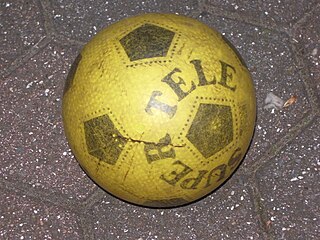 W
WA fly away is a kind of cheap football commonly used by children in the Western world. Its name derives from the fact that when they were first developed in the 1960s they cost a penny. The penny floater may have originated in Italy. The floater part comes from the fact that as they are made of a thin layer of hardened plastic filled with air: their light weight makes them susceptible to floating or swerving with the wind.
 W
WPlaysets, or play sets, are themed collections of similar toys designed to work together to enact some action or event. The most common toy playsets involve plastic figures, accessories, and possibly buildings or scenery, purchased together in a common box. Some sets during the 1960s and 1970s were offered within metal "suitcase" containers that also functioned as part of the playset.
 W
WRock 'Em Sock 'Em Robots is a two-player action toy and game designed by Marvin Glass and Associates and was first manufactured by the Marx toy company in 1964. It features two dueling robot boxers, Red Rocker and Blue Bomber, mechanically manipulated by the players, and the game is won when one player knocks the head off of the opponent. The 2000s version of the game by Mattel features physically smaller robots.
 W
WRock-a-Stack is a toy by Fisher-Price with colorful rings that have to be placed in order of size onto a tapered pole mounted on a rocking base. When stacked correctly the hollow plastic rings follow ROYGBIV color progression. The Rock-a-Stack is designed to teach young children about colors and to help them develop their hand-eye coordination and shape perception. Since the introduction of Rock-A-Stacks in 1960, over 40 million have been sold. While Ernest Thornell was the Fisher-Price designer of this toy, the Rock-a-Stack is stylistically similar to the earlier Rocky Color Cone wooden stacking toy designed in 1938 by Jarvis Rockwell for Holgate Toys.
 W
WSindy is a British fashion doll created by Pedigree Dolls & Toys in 1963. A rival to Barbie, Sindy's wholesome look and range of fashions and accessories made her the best-selling toy in the United Kingdom in 1968 and 1970. After Marx Toys' unsuccessful attempt to introduce Sindy in the United States in the late 1970s, Hasbro bought the rights to Sindy and remodelled the doll to look more American. As a result, the doll's popularity declined; in addition Barbie manufacturer Mattel filed a lawsuit for copyright infringement, which was settled when Hasbro agreed to remodel Sindy's face. During the 1990s, Barbie's share of the doll market continued to grow while Sindy's diminished, which led to Sindy being delisted from major retailers in 1997. Hasbro returned the doll's licence to Pedigree, and the doll was relaunched in 1999, manufactured by Vivid Imaginations. Sindy's 40th anniversary in 2003 saw a new manufacturer, New Moons, and another relaunch and redesign.
 W
WSkipper Roberts is a doll created by Mattel in 1964 to be Barbie's younger sister.
 W
WA Slinky is a precompressed helical spring toy invented by Richard James in the early 1940s. It can perform a number of tricks, including travelling down a flight of steps end-over-end as it stretches and re-forms itself with the aid of gravity and its own momentum, or appear to levitate for a period of time after it has been dropped. These interesting characteristics have contributed to its success as a toy in its home country of the United States, resulting in many popular toys with slinky components in a wide range of countries.
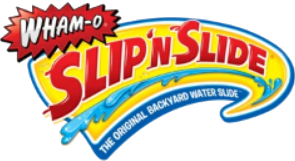 W
WSlip ’N Slide is a children's toy invented by Robert Carrier and manufactured by Wham-O. It was first sold in 1961. The main form is a plastic sheet and a method of wetting it; when the surface is wet it becomes very slippery, allowing the user to slide along it. Some versions also include an inflatable pool for the user to slide into, and spray tubes.
 W
WSophie the Giraffe is a teether – a toy for teething infants to chew on – in the form of a 7-inch-high (180 mm) hevea rubber giraffe.
 W
WSuzy Homemaker was a line of miniature functional toy household appliances produced by Topper Toys and launched in 1966. Topper Toys created a line of accessory toys to be bought separately, which included items such as a small working oven, a vacuum cleaner, and several other items in addition to a Suzy Homemaker doll introduced later. The term "Suzy Homemaker" has since become a common phrase in American English.
 W
WTammy was a 12" fashion doll created by the Ideal Toy Company that debuted at the 1962 International Toy Fair. Advertised as "The Doll You Love to Dress", Tammy was portrayed as a young American teenager, more "girl next door" than the cosmopolitan image of Mattel's Barbie, or American Character's Tressy.
 W
WTog'l was a construction set produced by Mattel from 1968 through 1970, similar in concept to Lego.
 W
WA tracer gun, sometimes known as a disc gun, is a kind of toy gun made of durable plastic. The toy shoots lightweight plastic discs roughly the size of a penny. Kids discovered it would also shoot U.S. pennies over a shorter distance. The discs used as ammunition for these guns are often sold with the label "Jet Discs." The firing mechanism is a spring, The magazine holds 20 "discs." Range is about 30 feet, and even then, accuracy is far from dependable. The trigger requires some force. The firing sound is a loud, low, and distinctive "snap!". Oftentimes the trigger will become loose and will take multiple attempts to shoot.
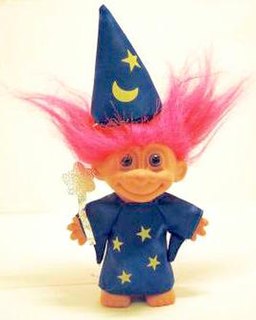 W
WA Troll Doll is a type of plastic doll with furry up-combed hair depicting a troll, also known as a Dam doll after their creator Danish woodcutter Thomas Dam. The toys are also known as good luck trolls, or gonk trolls in the United Kingdom.
 W
WTwister is a game of physical skill produced by Milton Bradley Company and Winning Moves Games USA. It is played on a large plastic mat that is spread on the floor or ground. The mat has six rows of large colored circles on it with a different color in each row: red, yellow, green, and blue. A spinner is attached to a square board and is used to determine where the player has to put their hand or foot. The spinner is divided into four labeled sections: left foot, right foot, left hand, and right hand. Each of those four sections are divided into the four colors. After spinning, the combination is called and players must move their matching hand or foot to a circle of the correct color. The game promotes itself as "the game that ties you up in knots".
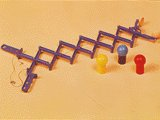 W
WUltra Hand is a toy that was manufactured by Nintendo in the late 1960s. It was created in 1966 by Gunpei Yokoi, who would later design the Love Tester, the D-pad, the Game Boy, and the WonderSwan.
 W
WThe Ultra Machine is a batting toy made by Nintendo and designed by Gunpei Yokoi in 1967.